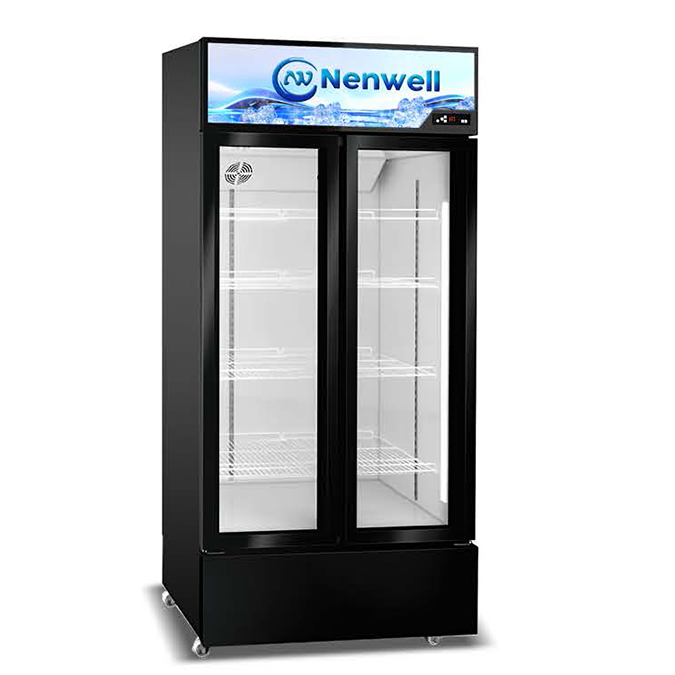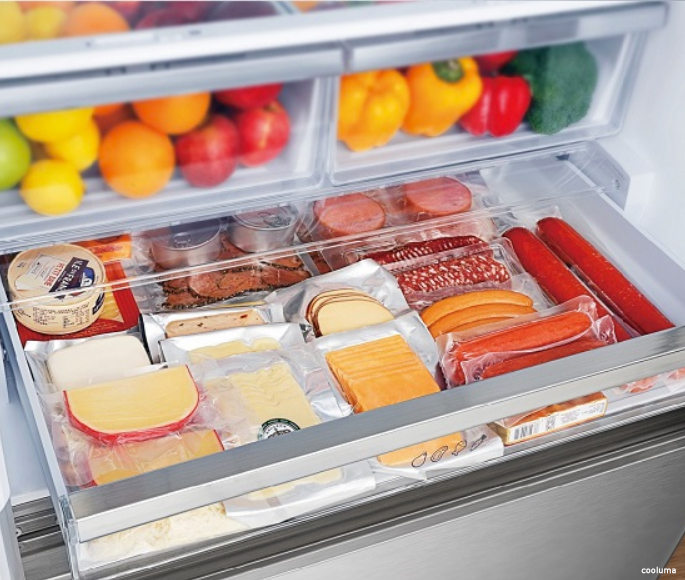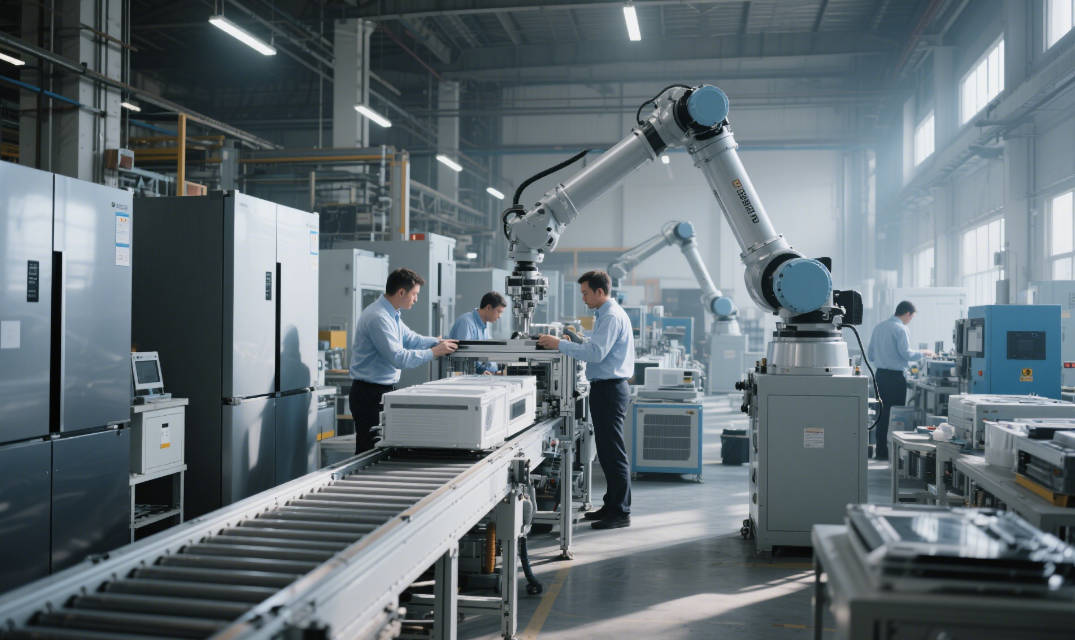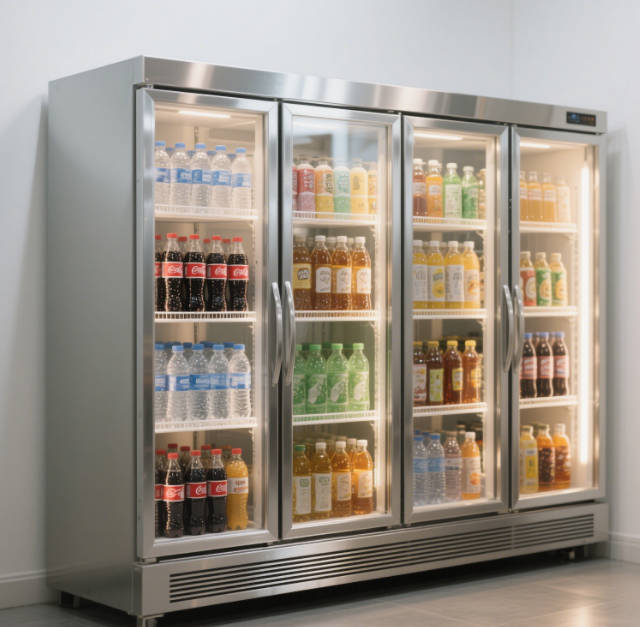
In the field of commercial display, glass display cabinets are ubiquitous, from high - end jewelry stores to daily convenience stores. They play a crucial role in showcasing products. In the design of display cabinets, the choice of doors is of great significance. Mechanical doors, with their unique advantages, dominate in glass display cabinets.
Mechanical doors have excellent reliability.
After long - term use and repeated opening and closing tests, the failure rate of mechanical doors is relatively low. Take the mechanical door of a well - known brand of glass display cabinets as an example. After 500,000 times of simulated opening and closing tests, less than 3% of the samples showed slight component wear, and it did not affect normal use. The common hinge - type mechanical door has a simple and clear structure, mainly composed of hinges, door bodies, and locks.
The hinge connects the door body and the cabinet. After countless openings and closings, as long as the material is of good quality, it rarely breaks or becomes loose. This stability ensures that the display cabinet can continue to be used normally without frequent maintenance. According to relevant statistics, the average annual maintenance frequency of glass display cabinets with mechanical doors is about 40% lower than that of display cabinets with other complex opening methods. For commercial places, it reduces the risk of business interruption caused by equipment failures and ensures the continuity of product display and sales.
mechanical doors perform outstandingly.
In terms of sealing performance, mechanical doors perform outstandingly. Through carefully designed sealing rubber strips, the mechanical door can fit tightly to the cabinet frame when closed. Data shows that under normal use conditions, high - quality mechanical door sealing rubber strips can reduce the air exchange rate between the inside and outside of the display cabinet to less than 0.05 cubic meters per minute. In refrigerated display cabinets, good sealing can effectively block the entry of external hot air and maintain a stable low - temperature environment inside the cabinet. Take the refrigerated display cabinet of a medium - sized supermarket as an example. The refrigerated display cabinet with a mechanical door can control the internal temperature fluctuation within ±1℃ within 24 hours, compared with ±3℃ for ordinary products without a mechanical door or with poor sealing performance. This not only reduces energy consumption and extends the service life of refrigeration equipment such as compressors but also ensures the freshness and quality of refrigerated products. It is estimated that the good sealing performance of mechanical doors can reduce the energy consumption of refrigerated display cabinets by about 15% - 20%, saving operating costs for merchants and improving economic benefits.
Safety is also a major highlight of mechanical doors. Many mechanical doors are equipped with sturdy locks, which can effectively prevent product theft. The mechanical doors of some high - end jewelry display cabinets use special lock cores and complex mechanical structures, which are difficult to open without professional unlocking tools. Relevant safety tests show that such mechanical door locks can resist the attack of common lock - picking tools for more than 30 minutes, providing reliable safety protection for valuable products.
In contrast, although smart doors seem to have advanced functions, they have not been widely popularized in the field of glass display cabinets. Smart doors generally detect the approach of people through sensors and then open automatically. Theoretically, this method provides a convenient experience for customers, allowing them to pick up products without having to open the door manually. However, in practical applications, there are many problems.
The induction system of smart doors is easily affected by the environment. In crowded shopping malls, when multiple smart doors operate simultaneously, the sensors may misjudge, causing the doors to open and close frequently. Research data shows that in a shopping mall environment with a passenger flow of more than 500 people per hour, the average number of unnecessary openings and closings of smart doors due to misjudgment of induction can reach 20 - 30 times per hour. This not only wastes energy but may also pinch customers, posing a safety hazard. In special environments such as strong light and electromagnetic interference, the accuracy of the induction system is greatly reduced, and even failure may occur. For example, in areas close to large - scale electronic equipment or with a large direct sunlight angle, the misjudgment rate of smart door sensors can be as high as more than 50%, seriously affecting the use effect.
The cost of smart doors is relatively high. Their research and development, production involve advanced sensor technology, control systems, and complex circuit designs, which makes the selling price of smart doors much higher than that of mechanical doors. Market research data shows that for glass display cabinets of the same specifications, the price of products equipped with smart doors is usually 30% - 50% higher than that of products equipped with mechanical doors. For merchants, purchasing a large number of smart doors for glass display cabinets will significantly increase the upfront investment cost. The maintenance of smart doors also requires professional technicians and equipment, and the subsequent maintenance cost is not low. According to statistics, the annual maintenance cost of smart doors is about 10% - 15% of their purchase cost, further increasing the burden on merchants.
The stability of smart doors also needs to be improved. Since they rely on power supply and the operation of electronic components, once there is a power outage or an electronic component failure, the door may not work properly. In the absence of a backup power supply or an emergency opening mechanism, it will bring great inconvenience to merchant management and customer shopping. Relevant failure statistics show that the probability of smart doors failing to work normally due to power or electronic component problems is about 5% - 8% per year, which is much higher than the probability of mechanical doors failing due to similar problems. The system software of smart doors may also have loopholes or failures, resulting in problems such as induction delays and the inability to close the door, affecting the normal use of the display cabinet.
The choice of mechanical doors for glass display cabinets is a consideration based on the advantages of reliability, sealing performance, and safety. Smart doors, due to problems such as the susceptibility of the induction system to interference, high costs, and poor stability, face many difficulties in the process of popularization. Although smart doors represent the direction of technological development, to be widely applied in the field of glass display cabinets, many technical and cost barriers need to be overcome to meet the actual commercial needs.






This batch of products seems to be of good quality.